The Lacuna: A Novel (P.S.)
4.4 out of 5
4,450 global ratings
New York Times Bestseller • A Best Book of the Year: New York Times, Chicago Tribune, San Francisco Chronicle, Seattle Times, and Kansas City Star• Winner of the Orange Prize
“Breathtaking. . . dazzling.” — New York Times Book Review
“Her best novel yet. . . both epic and deeply personal. . . . This is thought-provoking, and potentially thought-changing, historical fiction at its best.” — Dallas Morning News
In this powerfully imagined, provocative novel, Pulitzer Prize-winning author Barbara Kingsolver takes us on an epic journey from the Mexico of artists Diego Rivera and Frida Kahlo to the America of Pearl Harbor, FDR, and J. Edgar Hoover. The Lacuna is the poignant story of a man pulled between two nations as well as an unforgettable portrait of the artist—and of art itself.
Born in the United States, raised in Mexico, Harrison Shepherd lacks a sense of home in either. Life is whatever he learns from housekeepers who put him to work in the kitchen; from errands he runs in the streets; and, one fateful day, by mixing plaster for famed Mexican muralist Diego Rivera. He discovers a passion for Aztec history and the exotic, imperious artist Frida Kahlo, who will become his lifelong friend. When he goes to work for Lev Trotsky, an exiled political leader fighting for his life, Shepherd inadvertently casts his lot with art and revolution, newspaper headlines and howling gossip, and a risk of terrible violence.
Meanwhile, to the north, the United States will soon be caught up in the internationalist goodwill of World War II. There, in the land of his birth, Shepherd believes he might remake himself in America’s hopeful image and claim a voice of his own. Through darkening years, political winds continue to toss him between north and south in a plot that turns many times on the unspeakable breach—the lacuna—between truth and public presumption.
With deeply compelling characters, a vivid sense of place, and a clear grasp of how history and public opinion can shape a life, Kingsolver has created a rich and daring work of literature, establishing its author as one of the most provocative and important of her time.
544 pages,
Kindle
Audiobook
Hardcover
Paperback
Audio CD
First published July 19, 2010
ISBN 9780060852580
About the authors
Barbara Kingsolver
Barbara Kingsolver was born in 1955 and grew up in rural Kentucky. She earned degrees in biology from DePauw University and the University of Arizona, and has worked as a freelance writer and author since 1985. At various times she has lived in England, France, and the Canary Islands, and has worked in Europe, Africa, Asia, Mexico, and South America. She spent two decades in Tucson, Arizona, before moving to southwestern Virginia where she currently resides.
Her books, in order of publication, are: The Bean Trees (1988), Homeland (1989), Holding the Line: Women in the Great Arizona Mine Strike (1989), Animal Dreams (1990), Another America (1992), Pigs in Heaven (1993), High Tide in Tucson (1995), The Poisonwood Bible (1998), Prodigal Summer (2000), Small Wonder (2002), Last Stand: America's Virgin Lands, with photographer Annie Griffiths (2002), Animal, Vegetable, Miracle: A Year of Food Life (2007), The Lacuna (2009), Flight Behavior (2012), Unsheltered (2018), How To Fly (In 10,000 Easy Lessons) (2020), Demon Copperhead (2022), and coauthored with Lily Kingsolver, Coyote's Wild Home (2023). She served as editor for Best American Short Stories 2001.
Read more
Reviews

E. Heard
5
A literary delight
Reviewed in the United States on December 3, 2009
Verified Purchase
"The Lacuna" is a fascinating journey told through journal entries, letters, and news clippings. I read about this book prior to purchasing it and wasn't sure I would enjoy the format. I have read stories told through journal entries before and never enjoyed them. But Barbara Kingsolver avoids the limitations of that style by inventing a character who writes as though he's living a novel. Harrison Shepherd seems more interested in the people around him than himself, rarely inserting himself into the action except when necessary, and then usually referring to himself in third person or by some self-deprecating nickname.
The story takes places in Mexico and in the United States, since Shepherd was born in the U.S. to an american father and mexican mother. His mother is perhaps a lesson in how not to be an example to a child. She is constantly searching for the man with the largest wallet, and she is entirely self-absorbed. She leaves Harrison's father for a bigger financial fish in Mexico, and the story begins there. Shepherd, from that point on, becomes a person of two nationalities, writing with love and disgust about the events and people he observes on both sides of the border. A central relationship he forms is with the famous artist, Frida Kahlo, who seems to serve as both big-sister and surrogate mother. He recognizes in Frida a person very much like himself, a person who feels alone in a crowded room.
Other historical characters given attention are Frida's husband Diego Riviera and Bolshevik revolution leader Leon Trotsky. Here I must give a warning-- if you are someone who absolutely cannot abide a sympathetic view of people who are communists, this is not the book for you. Harrison Shepherd spends a great deal of his time with Frida, Riviera, and Trotsky, becoming close to each of them in his own way. He is not so much fascinated by their politics as he is with their characters. He seems to not have an opinion one way or the other about communism or the huge implications of its effect on the world. Rather than discuss Trotsky's role in the upheaval of Russia, Shepherd seems more interested in how Trotsky deals with people and how he fusses over the chickens in the yard. Indeed, a major theme of the book involves viewing people for who they are rather than who they are reputed to be.
"The Lacuna", above all else, is a feast of beautiful words. It is a book from which you will find yourself reading passages aloud just to hear the words spoken. You might even hassle your spouse (as I did) to read this or that paragraph because it was written so beautifully. I don't think the story would have worked so well had it not been written in the way it was. It is not heavily plot-driven, but more character driven. If I have any criticism to make it would be that I wish the denouement had been longer. But given the structure of this novel, a longer ending may not have been plausible.
Overall it's a great read. I have been going back and rereading different parts of it since I finished it; something I rarely do with a book. I might even just read it all over again. :)
Read more
7 people found this helpful
Robert M.
5
Vivid, evocative portrait of a life and an era
Reviewed in the United States on December 12, 2012
Verified Purchase
"The Lacuna" presents the story of a (fictional) author, Harrison Shepherd, from his boyhood in Mexico through his life and career in the United States through about 1950. Most of the narrative is presented in the form of Shepherd's personal diaries and correspondence. Shepherd experiences firsthand numerous events and settings of historical significance: post-revolutionary Mexico, the "Bonus Army" in Washington, Leon Trotsky's exile in Mexico, "Red Scare" in the United States, and in the process rubs elbows with some real historical figures - Diego Rivera & Frida Kahlo, Trotsky, Richard Nixon, etc. I was tempted at first to draw a parallel between this book and "Forrest Gump", but this book really stands on its own. The story starts off fairly slowly, with the day to day life of Shepherd as a boy, living with his mother in Mexico; it feels like it meanders for a bit (much like life for a teenager without much direction...) and then settles into a more conventional arc following Shepherd's return to Mexico and his employ with Trotsky in exile.
Most of all, Kingsolver has created some memorable characters. Shepherd is a singular wit, little formal education but very well read, and simultaneously wise and naive, sarcastic and idealistic. The minor characters - Shepherd's mother, Violet Brown, and others, are also well developed. She draws interesting personalities for the historical figures - Frida Kahlo in particular. I'm curious to know whether these personalities are drawn based on research, diaries, memoirs, etc or whether Kingsolver just imagines them. Either way, you get a different feel for the characters, and for the history, than you get from reading a Wikipedia entry (which I did for Kahlo, whom I had never heard of previously). Each character has a distinct pattern of speech, and these characters really jump off the page and inhabit the reader's imagination.
The settings are also described in vivid detail - Mexico most of all. With the caveat that I've spent all of 3 hours in Mexico, I feel like Kingsolver has created a wonderful portrait of this incredibly complex and vibrant culture, with its mixture of European and Native American, modern and ancient influences all woven together - something we Americans might miss when we stereotype Mexico as tacos and burritos, and Mexicans as the people who mow our lawns, pick our crops, and wash our dishes, and our most intimate experience with Mexico might be a trip to Tijuana or Cancun.
As for the historical content - I do feel like the Red Scare and McCarthyism and so forth have been thoroughly demolished previously, as has the interment of Japanese Americans during WWII, and numerous other warts in American history. I don't think Kingsolver adds anything particularly new to the critique of this, although perhaps it is still necessary to tell these stories, as we still have with us modern-day apologists for McCarthy, and the same tendencies to label and vilify "the enemy" are with us still. I had mixed feelings about the portrayal of Trotsky as a noble, kindly, grandfatherly figure. The description of his relationship to Stalin and Lenin is greatly abridged here; Trotsky is to say the least a controversial figure; but I'll leave it at that. I had to remind myself, regardless of Kingsolver's own politics, first and foremost she is presenting a portrait based on the young Shepherd's personal interactions with Trotsky, and as such you get a very different picture than you might get from a history book or a biography that focuses on the sweeping events of history. Rather it is the perspective of the naive Shepherd who knows Trotsky primarily as a man who loves his wife and grandchildren and gets excited about feeding the chickens or going hiking. So too about the other historical events; the point of this novel is not to present events in perfect historical detail (whatever that means), or to reveal new research, but to present history from the point of view of an individual, a small and insignificant bystander caught up in big events. The real stories of these bystanders are mostly lost at this point, but Kingsolver here imagines a very compelling vision.
Read more
10 people found this helpful
Jana L.Perskie
5
A thrilling literary adventure though history - A MUST READ for fans of Diego Rivera, Frida Kahlo & Mexican art and history!
Reviewed in the United States on January 18, 2012
Verified Purchase
Barbara Kingsolver paints extraordinary portraits of flamboyant Mexican artists Diego Rivera and his wife, Frida Kahlo, as well as Lev Trotsky, also know as Leon Trotsky, Russian Communist and Lenin's former companion, in her riveting novel, "La Lacuna." Trotsky, is in Mexico City to seek exile with the couple while hiding from Stalin's assassins. This epic saga takes us on a journey from 1920's Mexico to Pearl Harbor, WWII, and America in the 1950's, where citizens are paranoid and terrified by the idea of communists in their midst. Senator Joe McCarthy and the The House Committee on Un-American Activities intensify this paranoia.
In an interview, Ms. Kingsolver said, "I wanted to examine the birth of the modern American political psyche, using artists as a vehicle. I would start with the Mexican revolutionary muralists of the 1930's, and end with the anti-communist censorship of the 1950's. Diego Rivera was such a crucial part of that history, I thought I should have my narrator live in his household for a time. I was interested in the muralists, these men with their party work and collective shenanigans." She also writes a great deal about the indomitable "Frida," her art, and her relationships with the 2 main men in her life, Rivera and Trotsky. The sights, sounds, and even the tastes of Mexico are vividly captured in the novel so that one feels like they are right there, in Mexico, alongside her characters.
Ms Kingsolver goes on to say, in this same interview, "Frida is such a potent and intriguing person, she was everywhere I looked: her doodles and drawings even cover the margins of Diego's financial ledgers. I felt her poking at my shoulder, saying, 'Look, chica, you're ignoring me.' She was not a frozen icon at all, but a rogue, and a complex person with aches I understood. She started to steal scenes. She was a natural for drawing out my reclusive narrator - those two had brilliant chemistry."
Harrison William Shepherd, the novel's protagonist and narrator, is an accidental bystander to history. His journey through three tumultuous decades of the 20th century begins in a solitary boyhood. It continues through the Depression and World War II, and culminates in the ugly hysteria of the Red Scare in the United States.
Shepard, born in the United States to an indifferent Mexican mother and an absentee American father, is taken to Mexico at an early age. The boy is initially reared in a series of provisional households in Mexico, and then enrolled by his father in an exclusive American boarding school where he is a lonely outsider. After escaping life in school, he returns to Mexico City in the 1930s.
It is in Mexico City that Harrison finds a precarious home, where he works as a domestic for famed Mexican muralist Diego River and his wife, the exotic, formidable artist Frida Kahlo, who will become his lifelong friend. Here he is treated as a servant or a member of the family as it suits the couple. Life is whatever the boy learns from a series of housekeepers who put him to work in the kitchen. He also runs errands in the city's streets.
Rivera and Kahlo are ardent communists who fight for workers' rights, as long as it doesn't impinge on the smooth workings of their home and art strudios. One fateful day, Shepherd is given the odd job of mixing plaster for Rivera. He originally learned this skill by mixing flour for tortillas. During this time he also discovers a passion for Aztec and Mayan history and art. Later, when he goes to work for Lev Trotsky, an exiled political leader fighting for survival, Shepherd inadvertently casts his lot with art and revolution.
All important to this tale are the journals he keeps from early boyhood throughout his life. It is through these journals and a series of letters that the story unfolds. Later in life, living in the U.S., he becomes a novelist and is subsequently investigated by the The House Committee on Un-American Activities. He instructs his secretary, Violet Brown, to burn his diaries and letters. She saves them instead, which is fortunate, as without them there would be no storyline. Ms. Brown also plays a major role in this tale.
La Lacuna is a thrilling adventure though history accompanied by some of the period's most colorful characters. The title word, "Lacuna," refers to a gap or something that's absent... a missing section of text or an extended silence in a piece of music, etc. The motif of "lacuna" is the crucial missing piece which runs throughout the novel,
I have long been fascinated by Diego Rivera, the man and his art, and, especially by Frida Kahlo. Her paintings have always moved me and her biography is truly unique. So, I was thrilled when this book came out. Happily, Ms. Kingsolver's literary, historical novel has exceeded my expectations. It is the author's sixth novel, and won the 2010 Orange Prize for Fiction and the Library of Virginia Literary Award. "La Lacuna" was also shortlisted for the 2011 International IMPAC Dublin Literary Award. JANA
Read more
17 people found this helpful

John R. Guthrie
5
Like Diego Rivera's murals, a larger than life work.
Reviewed in the United States on February 9, 2010
Verified Purchase
Frida Kahlo was petite, birdlike, with a permanent limp due to severe injuries suffered in a bus accident as a teen. As well as her right leg, the accident damaged internal organs. Her injuries ultimately required some three dozen surgeries. You can see in her self-portraits her undeniable mustache, her unibrow, both of which she refused to conceal or remove. It is not surprising that her paintings, esteemed by art lovers worldwide, reflect her suffering. Yet there was beauty about her, a raw sexuality she did not hesitate to exercise. Jolie-laide, beautiful-ugly, the French would say. Her husband, Diego Rivera, was 21 years her senior, a tall and unprepossessing man with an ample belly and "eyes like boiled eggs." "The frog," some called him, including Frida. Diego and Frida were staunch Communists, dreaming of a classless society, Diego even had the house at 47 Positos Street in Gunajuato, in the center of Mexico, built without servant's quarters. Devoted Communists or not, Frida and Diego soon realized that picking up one's dirty socks from the floor or washing one's dirty underwear were nowhere to be found in the job description of either great artist. Soon a retinue of cooks, maids, drivers, and eventually, bodyguards, were crammed into nooks and crannies inadequate for housing them. Those armed guards: From1937 to 1939 they had a house guest, a short, stocky, man with an immense dome of a forehead and graying black hair. He made it a point to wear fine pajamas at night, knowing he might be murdered in his sleep. To be found dead in threadbare sleepwear would be an affront to the dignity of Lev ("Leon" is another transliteration) Trotsky. He was a Menshevik (Russian: "minority party" as opposed to, Bolshevik,"big party"). Whatever his shortcomings, compared with his nemesis in the Soviet leadership, Stalin, Trotsky was angelic. Trotsky is the third of the four major characters of Barbara Kingsolver's The Lacuna. The Lacuna (Latin, "a void," here the void between historical reality and what is generally recalled) provides a concise and interesting summary of Trotsky's dispossession by Stalin. Once Stalin clawed his way to the leadership position, he sent out agents of the GPU, ("Office of State Security," one of several predecessors of the KGB). These agents, assassins actually, systematically tracked down Trotsky and his family, including his children and his close associates. Around the globe, wherever they sought refuge, GPU agents found them. Then they killed them. The fourth major player in this historical drama is fictional; Harrison William Shepherd. Shepherd has an American father, a "government bean counter." He and Harrison's Mexican mother, Salomé, separated. She took the child to Mexico with her, expecting to marry her lover, a Mexican oilman. Though she and her son were in residence at the oilman's hacienda on Isla Pixol, a small island off the coast of Mexico, the businessman had other ideas than marrying Salomé. A coquette, she attempts to enthrall one or another man into marriage and thus the upkeep and maintenance of herself and her child. One such lover is American businessman P.T. Cash, "Produce the Cash," she calls him. After his mother's untimely death, Harrison is on his own, happening into a job mixing plaster for muralist Diego Rivera, then working and residing in his household as a cook and typist. Shepherd's story provides a frame for the body of the book, which begins and ends with his life story. He is a literary foil that provides continuity through his letters, journals and the articles he reads. A voracious reader, he is self-educated. Harrison becomes a best-selling author, penning books of historical fiction concerning the Aztecs. His archivist, at first identified only as, "VB," enters the narrative after he eventually settles in Asheville, N.C. Eventually Harrison comes to the attention of the House Un-American activities committee. He lived in a household with Communists as a teenager, thus in the fearful logic of the McCarthy era he had to be a dedicated Communist. The journey to the denouement for these four principals is a fascinating one. The book is filled with historical tidbits that add to the allure of this work. One example of such is the assault on the Bonus Marchers who encamped in Washington, D.C. in the spring and summer of 1932. The reader witnesses this pivotal incident (It helped assure Franklin Delano Roosevelt's election that same year) through the eyes of Harrison. The veterans of Belleau Wood, Verdun, Château Thierry, the Marne and other storied killing fields of WW I Europe, arrived in Washington by the tens of thousands, peacefully petitioning for the bonus for military service they had been promised. Many had their wives and children with them. President Hoover took exception to their presence and ordered Secretary of the Army Douglas MacArthur to drive them away. MacArthur brought in an infantry unit. Other sources indicate that it was George Patton, then a major, who arrived with a tank platoon and cavalry out of Fort Myers, VA. The bedraggled and hungry vets, watched as the cavalry came online. The vets cheered, thinking that the display of military pomp and pageantry was in their honor. Civil servants left work and lined Pennsylvania Avenue to witness the spectacle. The ensuing scene is sadly reminiscent of the Czar Nicholas's Cossacks assault on petitioning workers in St. Petersburg's "Bloody Sunday, in 1905. At 4:45 PM, the U.S. cavalry was given the order, "CHARGE!" They did so, followed by the infantry, then the tanks. The sabers of the horse soldiers slashing blades glittered in the weak sunlight of late afternoon. The civil servants watching cried out, "Shame! Shame!" MacArthur, though he'd been ordered by President Hoover to stand down after the initial routing of the veterans, refused to stop. He continued his armed pursuit of the hapless veterans into their, "Hooverville," the pathetic collection of hovels built from scraps of plywood, sheet metal and other detritus where wives children, and the wounded sought refuge. Then they put the shanties to the torch, forcing the veterans and their loved ones to flee to who-knows-where. MacArthur rationalized his actions by claiming, inaccurately, that the veterans had, "Communists," in their midst. President Hoover, perhaps making virtue of necessity, said later that he completely agreed with MacArthur's insubordinate decision. General/Secretary Collin Powell's statement concerning U.S. machinations in Chile in1973 come to mind; "that's a part of our history we're not very proud of." The ultimate resolution, the lives and quandaries of Shepherd, Rivera, Kahlo, and Trotsky are all fascinating. Even when the reader knows what's going to happen, as in the case of Trotsky, the memory is likely to be obscure; a picture faded by time. La Lacuna adds enticing detail as it brings the historical figures into sharp focus. At 507 pages, The Lacuna is a large and important work, one powerful enough to allow for this minor criticism. Kingsolver, in the first hundred pages or so, creates exposition using the childhood hardships of Harrison Shepherd and his mother. This section could benefit from judicious editing and a bit more of a hook to compel the reader to read on. This work doesn't really take wings until somewhere between pages 50 and 100. Even so, to hold La Lacuna in one's hand, to read it, is to witness and experience years of distilled effort and research. Like Diego Rivera's murals, it is a lager-than-life work full of color, life, and movement, one executed by a masterful artist at the height of her creative powers.
Read more
26 people found this helpful
Diane
5
A great combination of history and literature
Reviewed in the United States on April 1, 2011
Verified Purchase
One of my all-time favorite books is Barbara Kingsolver's The Poisonwood Bible, about a family of American missionaries in the Belgian Congo in 1959, about the time of the end of colonialism in Africa. Kingsolver draws the reader into an unfamiliar world, with interesting, yet flawed, characters.
Her latest novel, The Lacuna, tells the story of Harrison Shepherd, a young boy born to an American father and Mexican mother. His mother leaves his father to chase after a wealthy landowner in Mexico, with Harrison in tow. Harrison sees a unique woman in a market, and ends up befriending Frida Kahlo before she becomes a famous artist. Harrison shows a talent for mixing plaster, and Frida's lover, Diego Rivera, hires Harrison to work for him.
Harrison becomes immersed in their artistic and political world. Artists are notoriously difficult, and Frida and Diego fit that stereotype. Through them, he meets Leo Trotsky, the exiled Russian Communist leader. Trotsky trusts few people, and Harrison becomes one of them, so he works for Trotsky.
When Trotsky is murdered in front of him, Harrison heads back to the United States to live. He is an enigma to his neighbors, and even more so after he writes a novel that becomes a best seller. His Communist party ties come back to haunt him as the US government is beginning to ferret out the dangerous Communists in their midst.
I read this book for Books in the City Immigrant Stories Challenge and it fits the bill doubly. Shepherd is an immigrant in both of the countries he lived in, and at home in neither. Although born in the US, he spent much of his youth and young adulthood in Mexico, where he was considered a gringo. When he came back to the US, he was unfamiliar with American customs and way of life. He was a man without a country.
I enjoyed how Kingsolver used real historical characters and events to tell Harrison's story. I was fairly unfamiliar with Kahlo and Rivera's life and work, and although I knew a little more about Trotsky's life, I learned so much about that period of time, much like I did when I read The Poisonwood Bible.
The story is told through the diaries that Shepherd kept, along with some commentary from his secretary, Mrs. Brown, who is a wonderful character. She wanted Shepherd's story to be told, and was unwavering in her loyalty to her boss.
My favorite part of the story was Shepherd's fight to clear his name. The parallels between the poisoned, fearful political atmosphere in the 1950's, and the political atmosphere of today are intriguing. Either you are with us or you are against us, and if you are against us, you are not a patriot. All of the name calling on the cable news shows- calling anyone who wants universal health care a socialist, for example- while reading this book, you know the more things change, the more they sadly stay the same.
The Lacuna is one of the best books I have read this year. There is so much to ponder and ruminate over, and the historical setting and characters make this novel a dream for history buffs and lovers of great literature.
Read more
4 people found this helpful
mijcar
5
Kingsolver's Best Yet
Reviewed in the United States on May 20, 2010
Verified Purchase
If you browse these reviews, you will a smidgen of disparaging ones.
Some people claim the book is a challenging read (and didn't finish it). It is.
Some people found the relationships difficult to keep track of. They can be.
Some people found the book too long (they never finished it, either). It could be.
Some people found some of the Spanish incorrect. Yes, there are probably about half-a-dozen misspellings.
Some people thought there were too much use of the Spanish language. Perhaps, if you consider the fewer than a dozen untranslated phrases to be "too much."
Some people just didn't get it. Well, they can happen with just about anything.
All that being said, my view is that an excellent writer, one who has with each new book transcended her previous writers, has finally reached a pinnacle of achievement that must surely be insurpassable.
All of her stories probe the depth of the human psyche, some in broad settings (Poisonwood Bible), some virtually restricted to the intimate landscape of the human psyche (Prodigal Summer). In Lacuna, Kingsolver's landscape is broad, deep, and more intimate than ever.
So intimate is this book that the reader does not at first know who is/are the true protagonist/s. Is it the man, Harrison Shepherd, whose journals we are reading? But how could it be? When he not self-effacing, he is hiding behind a magician's screen of irony -- now you see him, now you don't. Or is Shepherd merely just that, a shepherd, guiding us through diverse biographies and periods, Diego Riviera, Frida Kahlo, Lev Trotsky and family, Mexican history, American politics of the forty's and fifty's?
The answer for me begins with how I feel about history. For me, history is an abstraction, an artform that purports to be representative but is actually subjective, misleading, and too emotionally distant to usually touch my heart. And yet sometimes it does just that, touches my heart. For me to be affected by history, I must have a sense of how it affects someone else, someone actually touched by that history. Biographies, therefore, touch me more than compilations of dates and facts. And fictions, when well done, can suggest greater truths than any boilerplate biography.
Harrison Shepherd is just that kind of protagonist. Alienated by choice and circumstances from much of conventional society, Shepherd finds survival in his writings, his observations, his need for accuracy and truth. When he fails his own standards, lapses in fairness, he is his own most severe critic. Behind his words of pain, twists of the tongue, ironies unending -- all true to character -- lies a soul of great longing and humanity. He is a character Graham Greene would have been pleased to give voice to, perhaps an unknown relative of the narrator of End of the Affair. He is, outwardly, a quiet man seeking only to maintain his distance from the society around him.
It is only a careful reading, a slow reading, that eventually illuminates him. This is a character for someone who does not mind crouching for a long time, hand outstretched with a tasty morsel, waiting however long for a shy creature to come forward and finally nose that morsel. And Shepherd does. Given time, he will eventually come and entwine himself within the psyche of the reader.
It took me a month to read this book and I would have paid quadruple to have it last twice as long. It took me a month because the moment I found myself thinking that perhaps it was too slow, I immediately backed off, knowing the failing was not in the book but within myself: too much exposure to quick art and quick solutions -- I should know better. And I did. I knew better. There are not many authors who deserve that kind of respect, but Kingsolver does, and I gave it to her. Some books you read to get to the action, and God bless them, they can be thrilling. Some books you read to get to the soul, and this one will.
Not that there isn't much happening. Everything is happening: Murder, assassination, assignations, various sexual encounters, artistic triumphs and failures, the high brought low, and the low creeping high over the bodies they brought down, humor, despair, love, hidden messages, the best of politics, the worst of politics ... there isn't much Kingsolver doesn't touch here, certainly one of her favorite topics, food, is critical to much in the book. If people don't see all that is happening, it is because so much has been compacted into this book. Read fast, it's like watching a Youtube condensation of an Altman movie. Read slowly, allowing things to unfold leisurely, giving them the time to match the event, the reader will be dazzled, shocked, and as caught up as in almost any contemporary thriller read at ten times the speed.
Bring your best reading skills to this book and it will reward you with some of the best reading you have had.
Read more
30 people found this helpful
Lacey Gabbard
4
The Whole Thing's a Hole
Reviewed in the United States on December 31, 2012
Verified Purchase
In attempting to review this novel, I am finding it difficult to recognize an true, unintended flaw. Perhaps my respect for Kingsolver is clouding my judgment, but I can imagine her purposefully including all my criticisms (the parts that don't seem to make sense, or things other readers found frustrating), either as a mystery to ponder or a detail to enhance the story's richness and depth. It's true, the diary-entry style of this novel leaves some holes. We don't know what happens to other characters because we don't read their diaries, and we really only hear their voices as translated through the novel's protagonist, Harrison Shepherd. Outside opinions are mostly expressed through clippings of articles or letters, and through the occasional narration of Violet Brown, Mr. Shephers stenographer. By the end of the novel, I felt like I knew Harrison Shepherd intimately, and I knew everyone else through his eyes. He recorded what he felt was important and "what had happened to them", and that is all we need to know.
The first part of "The Lacuna" drew me in immediately. Kingsolver's ability to create a world is masterful - you can sense the orange-tinted air of Mexico, smell the salt of the sea, and feel grains of sugary pastry dissolve on your tongue. There's an air of magic - of something lost, waiting to be found. Kingsolver clearly did her homework, at least as much was necessary, and as a lover of art history I found the interactions between Frida Kahlo, Diego Rivera and the Communists to be fascinating. Some readers found Harrison Shepherd to be a frustratingly complacent character, but that was who he was, and it was consistent with his words and lifestyle throughout the book. He was surrounded by enough movers and shakers - he didn't need to be one. Life happened around him, and he was a passive participant. As stated in the novel, his words would reveal the truth about him.
My reason for giving this novel 4 Stars is because of the gaping hole in the middle of the story, when Harrison Shepherd returns to America and becomes a reclusive writer. Even this has thematic consistency, but as a reader it was difficult to get through this section after the richness of the first section of the novel, which was more encompassing - the outside world of Mexico and the towns and cities, the ruins and scenery, the colorful characters and their interactions, and the beautiful descriptions. In the middle part of the book, the world collapses into a tiny focused sphere. Shepherd develops a fear of leaving his house and rarely goes outside - I'm guessing he was still living his a rich and colorful Mexico experience vicariously through his own novels, but we as readers are not privy to those words. This part of the novel consists mostly of conversations between two people, discussing the state of affairs in America and the world. This is supplemented by articles, letters, and reviews of Shepherd's writing. For me, the novel seemed to dry up. Perhaps I was getting impatient, or perhaps Kingsolver is a patient writer. Now I can see this section was laying the foundation for the book's conclusion, but while reading it I felt we were travelling through a long tunnel with no end in sight.
However this was a necessary lull, for in retrospect this section brings the reader closer to the characters, though done with such masterful subtlety by Kingsolver that one does not even recognize the growing involvement. The reader is drawn along at the same steady pace, until finally the characters reveal themselves truly, perhaps for the first time, by their sincere actions. The holes in the story, or the pieces that don't seem to have any conclusion, do not seem important - in fact this is much like life, where one can never really know someone except through their actions, and when the truth is unveiled it is a recognition that is sensed rather than explained. Such is the conclusion of "The Lacuna", and this realization is like bursting from a tunnel to the light of day.
Read more
4 people found this helpful
GVC
4
Unique novel about 1940s but very relevant today
Reviewed in the United States on November 1, 2018
Verified Purchase
Barbara Kingsolver has written a unique novel about the 1940s and 50s in the US and Mexico but very relevant to today’s political environment. Harrison Shepherd grows up in US and Mexico being the son of a US government official estranged from his somewhat unstable Mexican mother. He is an outsider in the both places and a homosexual to boot. To survive he adopts a passive approach carried along by the tide of life. More or less by accident he meets prominent communists in Mexico and becomes their cook, typist and translator. As a adult he drifts into writing and later living in North Carolina. He is persecuted by the Un-American Activities Movement because of his association with Communists using lies and misguided patriotism. Finally he escapes to a new life in Mexico.
The author uses some novel techniques in the book. The title, Lacuna, refers an underwater cave between two worlds, Harrison Shepherd himself as a gap between US and Mexico, Harrison’s secretary Violet Brown as the gap between oppressed women and learned independent modern women and the gap between the truth and what newspapers write. Mystery and dramatic tension comes from manipulating the information available to different characters Harrison Shepherd, Violet Brown and others.
The characters in the book are Harrison Shepherd – passive, lacks freewill in most of the book. Violet Brown – active, makes positive decision to develop herself despite opposition of her family Frida - overcomes perception of weakness of small statue and lame leg but her outspoken and prominent personality Diego – keeps staff in poor conditions and treats them badly despite political views supporting workers Leo- proposes democratic approach to the revolution, kindly, cares about people, animals and humanity Mother – free spirit looking for an interesting man to provide Father- uncaring, conservative Leandro- father replacement teaches Harrison how to cook Mexican food and gives him goggles to see a new world underwater.
The novel is set in Mexico and US but Mexico comes out way ahead as being colourful with good food passionate people and a mind boggling pre-Columbian past. US is painted as oppressive with evil people in control brainwashing the populace.
Some of the issues that the novel raises are
- Power of words. Harrison’s own words from his novel are used against him, something he was worries about when he translates for Leo.
- How Patriotism can go wrong. Criticism of norms of the day like segregation and a different role for women were considered unpatriotic in the 1940s
- Freewill vs Determinism. Was Harrison free to chose his fate or was it predetermined and he was just carried along
Some quotations I thought interesting enough to highlight in my ereader are
- Cortes – much grieved to burn the people but since it was more grievous to them he determined to do it
- Azteca warriors uselessly flinging arrows at Cortes, just before their hearts were blown apart by cannon fire
- What they left behind is in every measure as grand and elegant as the white marble temples of Greece
- He wrote about those who came before giving flesh to their cares
- Un-American hysteria not about communism but about insecurity (Arthur Gold)
- Anti-Communist persecution (Arthur Gold) .. like putting poison on the lawn .. Kills the crabgrass all right but then you have a lot of dead stuff there for a very long time
Questions for reader
- The McCarthy era was down point for America but is some of the hysteria coming back ?
- What is Patriotism about in 2018? Does it also include a committment preserving the bad things from the past ?
Read more
20 people found this helpful
JCrazy8
4
Book review: The Lacuna
Reviewed in the United States on September 5, 2010
Verified Purchase
Over the holidays I enjoyed the luxury of taking in Barbara Kingsolver's new novel, The Lacuna. As a big fan of her previous work, both page-turning novels like The Poisonwood Bible and the nonfiction hit Animal, Vegetable, Miracle, I had been delighted to hear that the former Tucsonan was publishing her first novel in nine years. In this ambitious book, Kingsolver marries these two worlds (fiction and nonfiction), writing the tale of a fictional character into the lives of real historical figures and events in 20th century Mexico and the U.S. In her innovative approach, much is gained in bringing a crucial and fascinating history to life, but much is also lost: the book lacks both the page-turning readability of her earlier fiction, as well as the straightforward impact of her first-person, nonfiction local food-ography Animal, Vegetable, Miracle.
The Lacuna follows the life of Harrison Shepherd, an (fictional) American-born boy whose divorced Mexican mother has returned to her home country to raise him. Shepherd's mother chases wealthy men for a living, often leaving him alone or with hired help as his only companions. The majority of the story is told through Shepherd's journals, which he takes to writing as a boy and continues through much of his adult life. He is a lonely and brooding character, who demonstrates his lack of self worth in the fact that he never (until later in life) actually refers to himself in his journals. However, his life changes when he stumbles into a job mixing plaster for the legendary muralist Diego Rivera.
From here, Kingsolver weaves Shepherd's tale of self actualization into the part-historical, part-fictional lives of Rivera, his wife Frida Kahlo and their friend and houseguest the exiled Russian revolutionary Leon Trotsky. The author intertwines actual known events from the artists' and Trotsky's lives and real newspaper stories with the life of her protagonist, developing relationships that reveal Shepherd's development as a man, and offer a humanizing (if hypothetical) window into the lives of these larger-than-life characters.
Given the players and the historical period, the book increasingly comes to focus on cultural reactions to communism, first in Mexico and then in America when Shepherd returns there to become a successful novelist (he writes Mexican historical fiction). Through Shepherd, Kingsolver paints a highly sympathetic picture of Trotsky and his version of communism; and when Shepherd becomes embroiled in the Second Red Scare suspected of conducting "un-American activities," her book unleashes a scathing commentary on the effect of ignorance and fear upon society.
It's obvious that this book was written during the Bush years, where the "Axis of Evil," "you're either with us or you're against us," and the steamroller of "love it or leave it" patriotism reared their ugly heads, showing the world that perhaps we haven't come that far lo these past 60 years. Through Shepherd's tale, Kingsolver reminds (or in my case, teaches) us how bad things actually got and could well get again if left unchecked. Fascinating (I learned more about Mexican and American history than I have in longer than I'd care to admit) and instructive as the book is, I found myself feeling jarred by just how present Kingsolver's own voice is through the narrative. Perhaps my mind has been tainted by reading her nonfiction, but her carefully crafted relationships and often masterful turns of phrase in The Lacuna begin to seem stilted in the book's increasingly political context and overtly challenging narrative method. The result is that those relationships ring a bit hollow as the moral commentary takes center stage. Meanwhile, the story's plot languishes at times amid the sweeping arc of history.
Via her new take on historical fiction, Barbara Kingsolver has actually created something new in The Lacuna. This in and of itself is an accomplishment, and I found great enjoyment in re-capitulating the book's complexities in my mind for this review. The book brings to life - and sheds new light on - several significant pages in history through a compelling cast of characters, not the least of which turns out to be Harrison Shepherd himself. In the end, though, I found it difficult to see the story for the technique.
Read more
6 people found this helpful
RONALD
3
Accomplished author slips...
Reviewed in the United States on December 2, 2010
Verified Purchase
This review is based on the unabridged audio book version of this work. It was read by the author. I loved Kingsolver's previous novels and after such a long wait since her last work, I was really looking forward to this new release. I was disappointed. I have truly mixed feelings about this novel: there is some beautiful writing and there are sections that made me want to quit. First off, this is a novel - a work of fiction. The author states this at the outset. However, it is placed in historical context: the stage alternates between Mexico and the United States in the backdrop of the aftermath of the Bolshevik revolution, WWII and the anticommunist fervor that enveloped the U.S. afterward. Many a great literary mind has succeeded in creating great historical novels by using the stage of history to develop their characters and their stories. Kingsolver, on the other hand, uses the characters to promote her view of historical events and vent her emotions in the process. I do believe she was crying during the reading of certain passages. Very emotional and effective but many a time, proselytizing (and boring).
The story follows American-Mexican boy Harrison Shepherd from his early puberty in Mexico to his mid-thirties in Asheville, North Carolina. The boy and man created by BK is a very sensitive, introverted person, who has the gifts of words, kindness, compassion, insight and wisdom. What's not to love, right? However, he is so awkward, you never really connect with him. The story unfolds through a series of diary entries (the approach worked better in The Poisonwood Bible). The reader is treated to the most intimate thoughts of the protagonist since his days as a boy relocated abroad by his divorced Mexican mother, afraid of jungle night sounds, to his learning to hold his breath in the ocean and discovering the underwater world, becoming a cook apprentice, progressing to a plaster mixer (for Diego Rivera, no less), his befriending Frida Kahlo, becoming personal secretary for exiled Lev Trotsky, early adulthood, his move to the US, rise to fame as an author of fiction (coincidentally, his novels also take place in historical context - the fall of the Maya and Aztec empires) and fall to disgrace when the US Government investigates him as a communist for his early life associations to Rivera and Trotsky. The press reviles him and provides fodder for the hearings (no surprises here). The diaries are written by the protagonist but the story is delivered to the reader by Violet Brown, a widow Shepherd hired as a stenographer once he became published. She is his most ardent defender and some of the most beautiful passages (and reading) of this audio book spring from the exchanges between these two.
Let me reiterate: beautiful writing and exquisite passages abound in this novel. There are also many instances in which the preaching is repetitive to the point of making one want to scream "give it up!"
Last, and this is a small peeve, BK uses quite a bit of Spanish, particularly in the sections that take place in Mexico. I don't understand why a novel in English must have a random spattering of words in another language. Is it to create an atmosphere of authenticity or do authors want to show off their (self-perceived) knowledge of the language? If the former, it does so only for people who are not fluent in the language and in that case, the non-native speaker is forced to ignore the word or look it up. Spanish is very prone to have different meanings for a word according to dialect so for a non-fluent speaker, the meaning of the sentence can be lost. I am positive that such was the case in this instance: I am fluent in Spanish - it is my native tongue. Some of the Spanish words were used incorrectly for the context of the sentence. And, although the reader (remember, Kingsolver herself) makes a valiant effort, her pronunciation is, well, quite accented. Her command of English is masterful - she should use it. Spanish peeve aside, her reading/performance of the work is very good. I could almost 'see' Violet when she spoke.
Read more
4 people found this helpful
Top Barbara Kingsolver titles
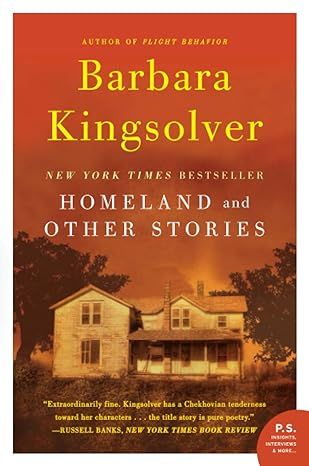
Homeland: And Other Stories
4.2
-
691
$5.24

Animal, Vegetable, Miracle: Our Year of Seasonal Eating
4.5
-
2,496
$7.96
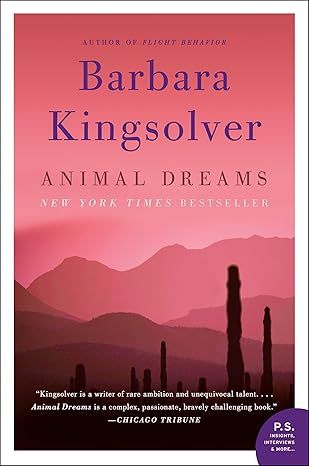
Animal Dreams: A Novel
4.4
-
2,888
$10.49
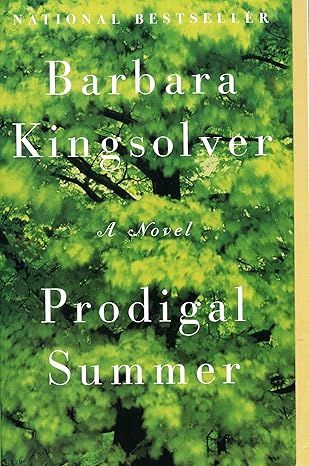
Prodigal Summer: A Novel
4.4
-
6,309
$8.99
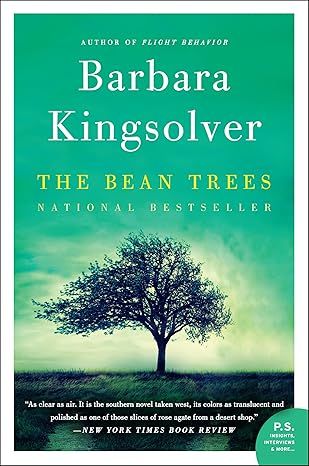
The Bean Trees Anniversary Edition: A Novel
4.4
-
11,504
$2.41

Unsheltered: A Novel
4.2
-
12,750
$5.24
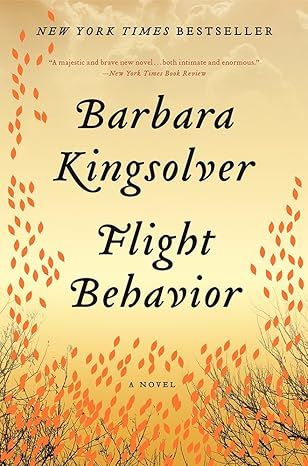
Flight Behavior: A Novel
4.3
-
9,479
$1.84
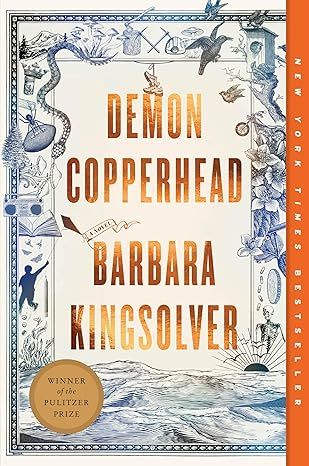
Demon Copperhead: A Novel
4.6
-
110,129
$16.99
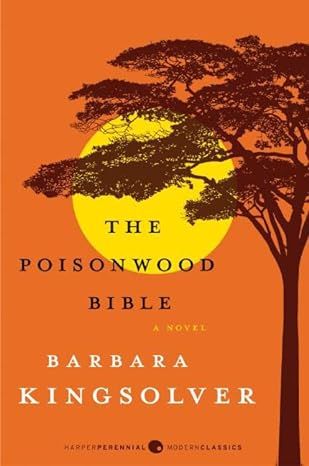
The Poisonwood Bible: A Novel
4.5
-
16,256
$12.69
Best Sellers
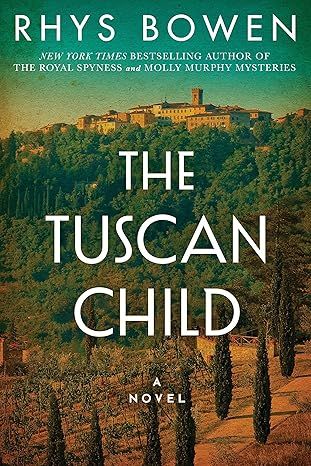
The Tuscan Child
4.2
-
100,022
$8.39
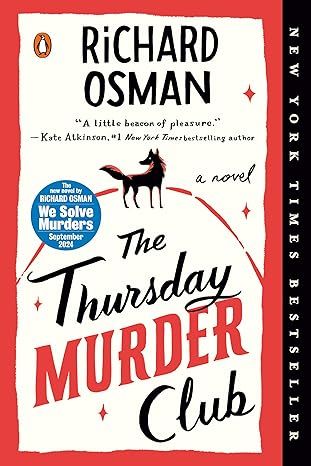
The Thursday Murder Club: A Novel (A Thursday Murder Club Mystery)
4.3
-
155,575
$6.33
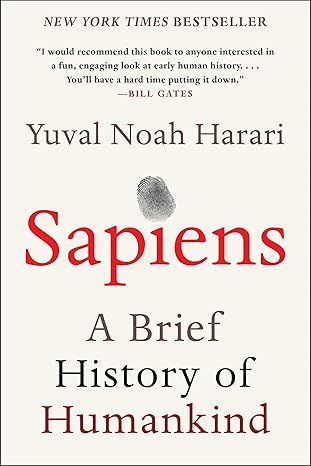
Sapiens: A Brief History of Humankind
4.6
-
140,302
$13.49
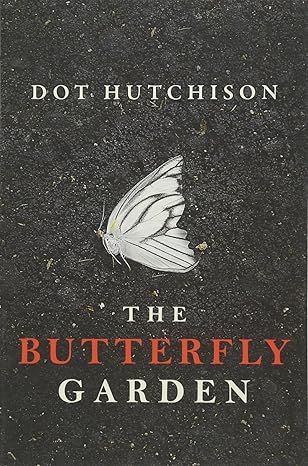
The Butterfly Garden (The Collector, 1)
4.3
-
88,556
$9.59
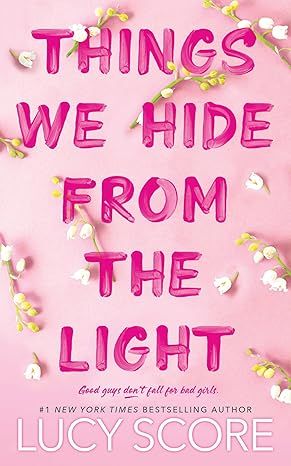
Things We Hide from the Light (Knockemout Series, 2)
4.4
-
94,890
$11.66
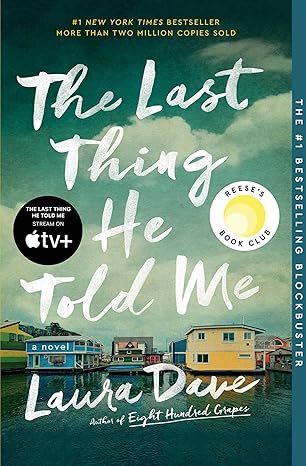
The Last Thing He Told Me: A Novel
4.3
-
154,085
$2.99

The Perfect Marriage: A Completely Gripping Psychological Suspense
4.3
-
143,196
$9.47
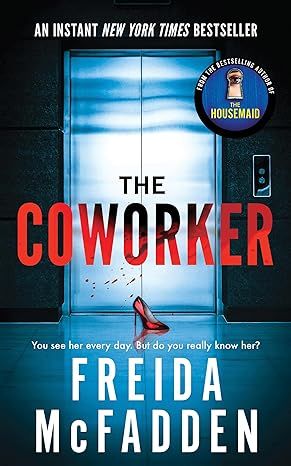
The Coworker
4.1
-
80,003
$13.48

First Lie Wins: A Novel (Random House Large Print)
4.3
-
54,062
$14.99
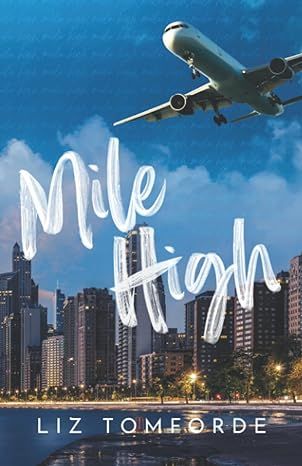
Mile High (Windy City Series Book 1)
4.4
-
59,745
$16.19

Layla
4.2
-
107,613
$8.99
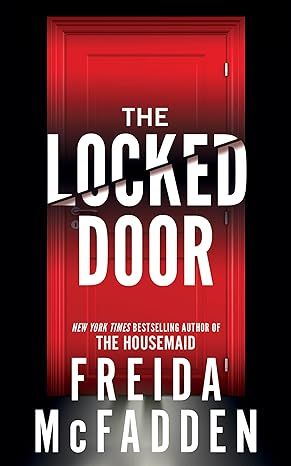
The Locked Door
4.4
-
94,673
$8.53

